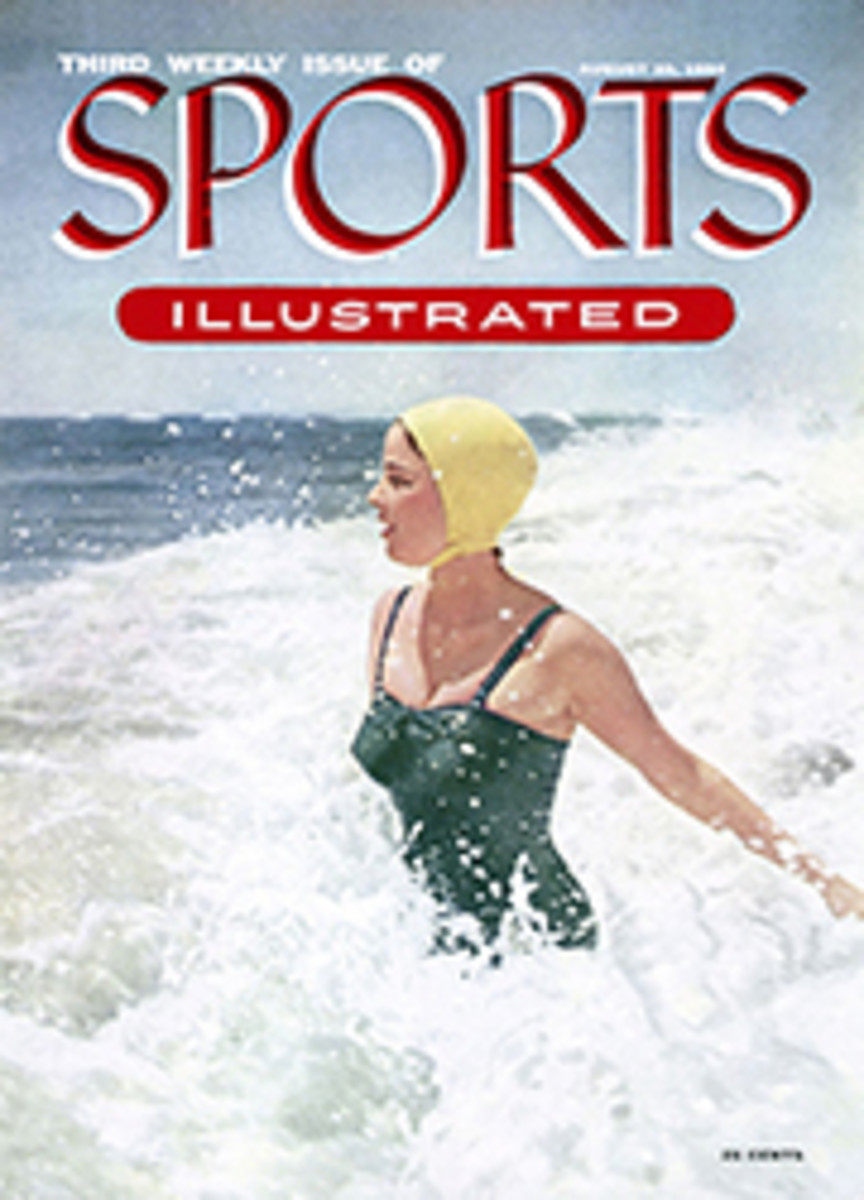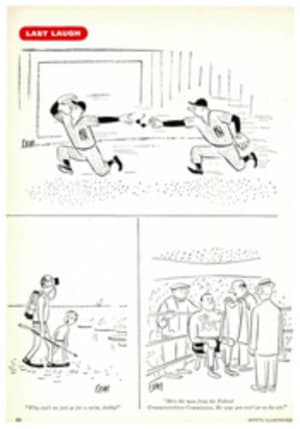
You Should Know: If You Are About To Take Up Golf
A humbling game
Golf is one of those games that can drive you either to the peak of supreme enjoyment or the depths of indescribable frustration. You may ride on the clouds after a booming drive that sails more than 200 yards straight down the middle. Chances are, though, if you ever get to be an average golfer, those moments of ecstasy will be balanced by the anguish of watching a flubbed shot scamper erratically into an impenetrable thicket. It's that kind of game. But, strangely enough, it adds up to pleasure. You're not crazy for taking it up. You've got lots of company. There are five million golfers in the U.S. today, and if you can score lower than 110 for 18 holes you're better than half of them.
Where to play
There are 5,056 golf courses (give or take a course) in the country, 3,029 of them private membership clubs. The others are open to the public for fees ranging from 50j£ to $5 and sometimes more.
The course
A golf course consists of nine or 18 holes. These holes are rated as three, four or five pars depending on their length and are calibrated to the number of shots an expert golfer should take to get the ball into the hole, including two putts. In general, the length of par-3 holes ranges up to 250 yards, par-4s from 250 to 450 and par-5s 450 and over. The area from which the first shot is made is called the tee. At the other end of the hole is a grass area mowed tight so the ball can be rolled into the hole. This is the green, about 60 feet in diameter. The hole can be located in any spot on the green. The intervening well-tended area, 35 to 60 yards wide, is the fairway along which you should play to the hole. It is bordered by less well-kept ground called the rough and studded with pockets of sand called bunkers or traps, especially around the green.
Weapons
These are your clubs, 14 if you wish to carry the legal limit but 10 to 12 if you're an average golfer. Seven will do nicely for the beginner: two woods (a driver or brassie for tee shots and number three wood for fairway shots), four irons (a recommended selection for a wide range of shots would be numbers three, five, seven and nine) and the putter. The "faces" of the irons have graduated degrees of loft, the higher the loft the less the possible distance. Your putter is a straight bladed iron for rolling the ball into the hole once you're on the green.
How to buy them
The basic seven club outfit sells from $40 to $135. A good average set is about $70. Spalding, Wilson, MacGregor, Kroyden, Pederson and Hillerich & Bradsby are leading club makers, though there are many good independents. These companies also make lighter weight sets with shorter shafts for women. The right clubs for you depend on build and co-ordination. The flexible shaft helps older persons not blessed with natural timing. Stiffer shafts give greater distance if handled properly but more degree of error if used improperly. These are usually for the strong athletic type with powerful wrists and arms. In any event, consult a club pro. He can best judge the proper clubs for you.
On the green
The putter is a club apart from your other irons just as the putting stroke is apart from the rest of your shots. Putters come in all sizes, shapes and weights because techniques are so individual. Pick one that suits you and stick to it. If it feels comfortable, it's the right one for your game.
Balls
Balls range in price from 50c to $1.25 and are of two basic types—the thin-cover ball for greater distance and the tough-cover ball which will cut less easily but fly a few yards shorter. The former has slightly higher compression. Tough-cover balls are best by far for beginners, who will do well to buy inexpensive balls to start with as you'll lose a good many at first. Acushnet, Spalding, Wilson, MacGregor, Dunlop, Worthington and U.S. Rubber are leading golf ball manufacturers.
Clothes
Comfort is the main thing in golfing attire. Clothes should provide freedom of movement. Shirts should have extra room under the arms to allow for a free swing. Cotton absorbent shirts are preferred. Bermuda length shorts are popular and comfortable. On sunny days wear a hat for protection with a visor to cut down glare. Golfers use heavy socks, preferably all wool, to absorb perspiration. Spiked golf shoes or shoes with toggled rubber soles are almost a must. They provide necessary firm footing for correct stance on uphill, downhill or sidehill shots.
Fore!
Before teeing up for the first time, get some golf experience at first hand by walking around the course with friends who are experienced golfers. Watch what they do. You'll see what clubs they use in each situation and you'll learn golf etiquette, which is quite precise. Always play it safe. Never hit while there is a chance of your ball striking someone. And, for your own protection, don't play in an electrical storm. Your club shafts will conduct lightning. Take shelter but not, please, under a tree.
Lessons
These are essential to the beginner. Learn the right way to start with or you risk picking up bad habits that will be hard to cure later on. Lessons will make the game more enjoyable for you, though they will cost you about $4 a half hour for private instruction. Group lessons are offered by many pros and will save pocketbook strain. Every major city has indoor golf studios where instruction by competent pros is available on your lunch hour.
Books
No one book is the best. We can't recommend reading for you, but many golfers have been helped by the following four: How to Play Golf by Sam Snead (Garden City, $2.50); Power Golf by Ben Hogan (Barnes, $3); How to Play Your Best Golf All the Time by Tommy Armour (Simon & Schuster, $2.95); and Enjoy Your Golf by Lealand Gustavson (Harcourt Brace & Co., $2.95). Pick one and read it. You may get some help.
Caddies
Caddies are expensive these days but can make golf more enjoyable, if you can afford them, by carrying your bag and suggesting which club to use for a particular shot. A good caddy knows his course thoroughly and can give you good advice. Ask the advice of a regular player about how much to tip. If caddies are too steep for you, golf carts are available on which to carry your clubs. You can buy one for $18 to $60 and many courses have them for rent.
Your attitude
Most who have played it agree that golf is a humbling game. It requires more practice and more precise self-control than virtually any other sport.. But your practicing should be done on practice fairways. Once you're on the course, don't fritter around and experiment. Get up and hit the ball. It's easy to be theoretical about golf, but you do so at your own risk. Just remember it's a game for fun, probably the best outdoor game for all ages ever invented. Happy hitting!

